Melbourne City Camp 2015
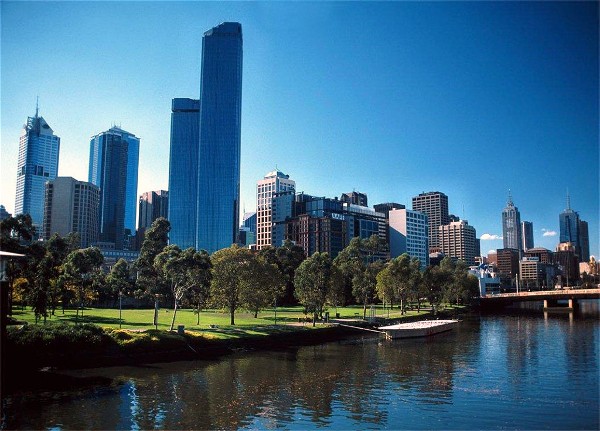
Friday 6 - Friday 13 March 2015
Led by Joan and Bob
Words by Joan, Ainslie and Karen M
Photos by Donna, Karen C and Joan
With a sense of the adventure always found in the Batemans Bay Bushwalkers
there were 40 members who recently travelled to Melbourne for a 'camp' led by
Bob and Joan in March 2015. Motel accommodation was located one street away
from beautiful Fitzroy Gardens where the home of Captain Cook's parents is now
located. With tram, train and bus travel extremely efficient at taking us to
all the walking locations enjoyed throughout the week, every day became an
exploration of this wonderful city and nearby areas within 25 kilometres.
Convenient and enjoyable restaurants were discovered nearby and nightlife also
played a part of this week of life in a city with several members enjoying the
live theatre shows of 'Strictly Ballroom' and 'Dirty Dancing'.
With two walk options most days, there were many locations not visited before
by most of the group and some surprises in store along the way. The main
features of the week were visits to Heide Gallery and gardens, Williamstown by
ferry, historic Como House and punt to Herring Island, the Arts Precincts of the
city, Sherbrooke Forest Dandenongs, Cranbourne Australian Botanic Gardens,
Warrandyte Goldfields, Docklands, MCG plus sporting areas and St Kilda foreshore
and environs.
We must credit Julie Mundy and her excellent book, Melbourne's Best Bush, Bay and
City Walks, for providing ideas and routes for all the walks undertaken on the camp;
and also some of the walk descriptions below.
Day 1
Heide Sculpture Walk and Banksia Park - led by Susan
The Museum of Modern Art at Heide was once the home of John and Sunday Reid, the
husband and wife patrons of the arts who fostered and supported many of
Australia's well known artists, including Albert Tucker, Sidney Nolan, Joy Hester,
Mirka Mora, Arthur Boyd and many others. Over the last thirty years, this home-turned-gallery
has grown to include 16 acres of contemporary buildings housing a
range of galleries, and also the kitchen garden and sculpture walk. Situated on
the banks of the Yarra River, this 2 km+ walk takes in the Heide gardens and buildings
as well as the stretches of Red River gum floodplains in neighbouring Banksia Park.
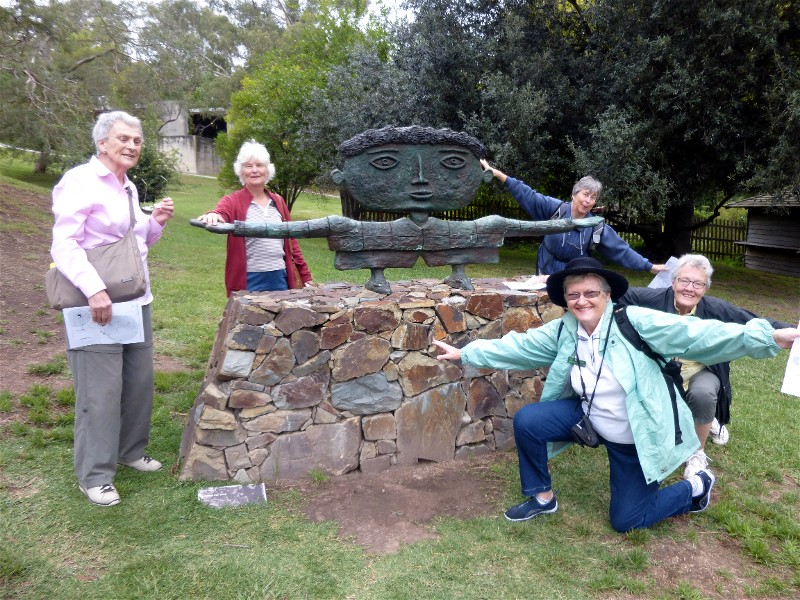 |
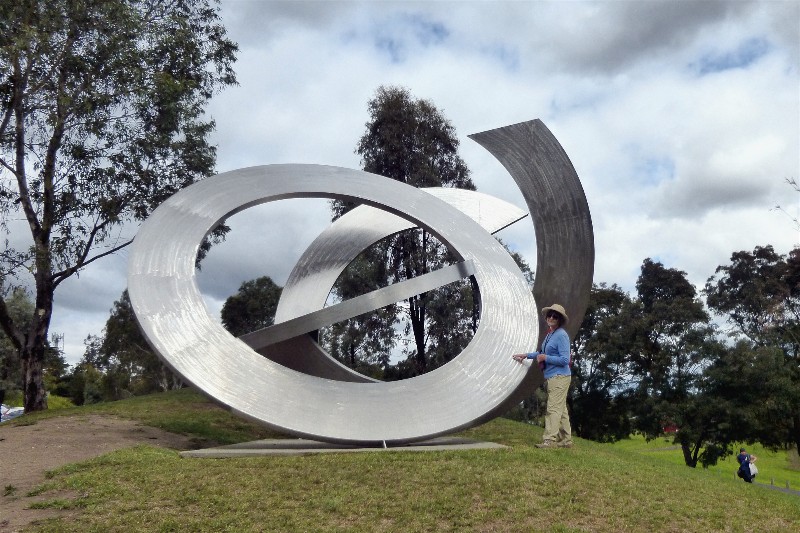 |
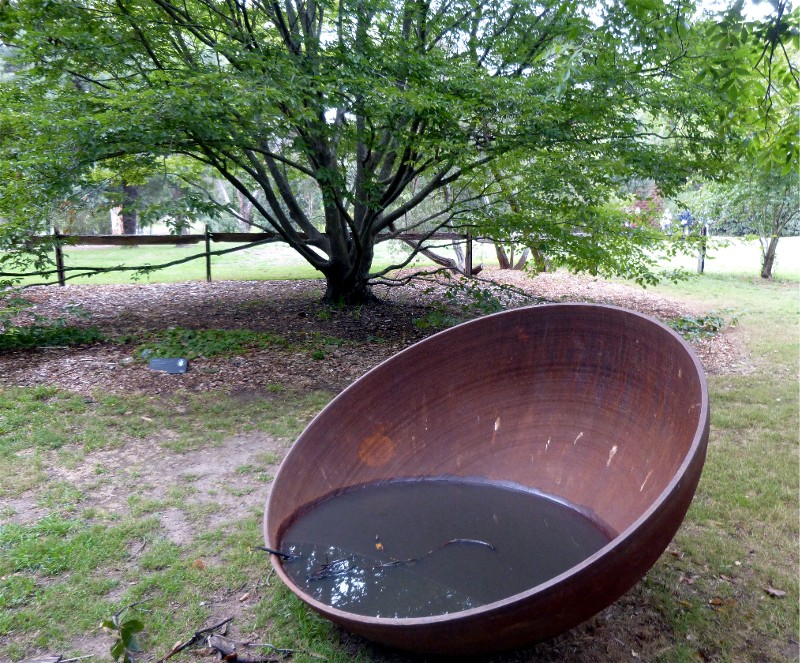 |
Having some fun with sculpture
Click on thumbnail to enlarge photo |
Joan helps with the polishing
Click on thumbnail to enlarge photo |
Brown soup
Click on thumbnail to enlarge photo |
Williamstown Maritime History led by - Ian H
The crowded little ferry took our group of twenty from Melbourne down the brown
waters of the upside-down Yarra River to its junction with Port Phillip Bay and
Williamstown. This is a very different viewpoint for seeing Melbourne, its
extraordinary shoreline development with blue mirrored high rise buildings,
Dockland's apartments, then the working port with containers moved around,
computer guided.
Ian had prepared our historic tour with a small map and list of sights. Firstly
we examined one of four huge rare rifled muzzle loading fortress guns, which
would have very successfully kept the Russians at bay in 1867 if they had been
able to find Williamstown.
From Gem Pier we passed the Old Customs House, now a gallery in keeping with
the gentrification of this original settlement of the colony of Victoria
(separated from New South Wales in 1851) as people poured into the port on the
way to the goldfield. So many ended up dead that the pubs had to be used to keep
the bodies, and being bad for business, a morgue was needed. We saw the small
building constructed of bluestone cut by convicts and used as a morgue from 1859 to 1925.
The time-ball drop tower was used from 1853 to 1926 for ships to set their
chronometers as the ball was dropped at 1 pm every day. It was also used as a
lighthouse. Six hundred convicts were kept in prison hulks and they quarried stone
and built the tower and Fort Gellibrand. We strolled along the shore, lined with
volcanic rocks including an extremely rare lava blister about five metres across.
And so past restored Victorian and Federation houses to the Railway Museum, where
we saw "Heavy Harry", the largest steam locomotive ever built in Australia, and
then to the station to return to Melbourne.
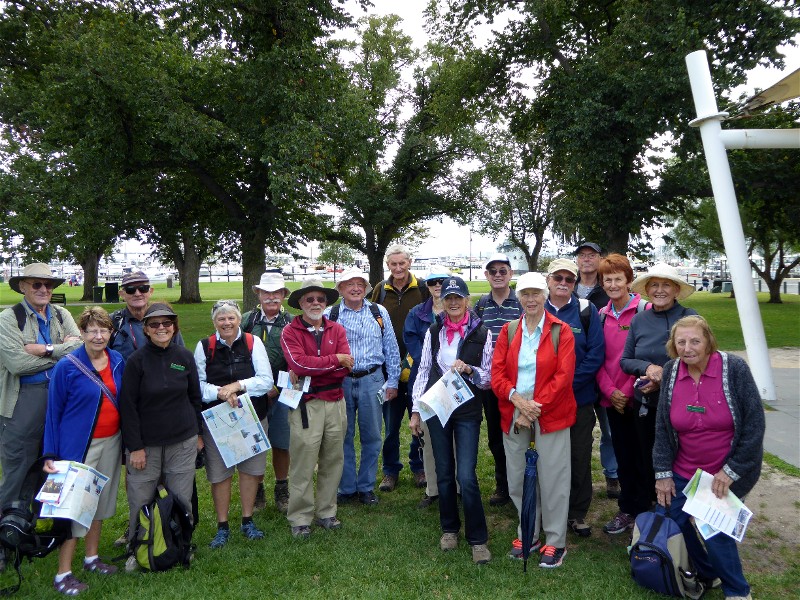 |
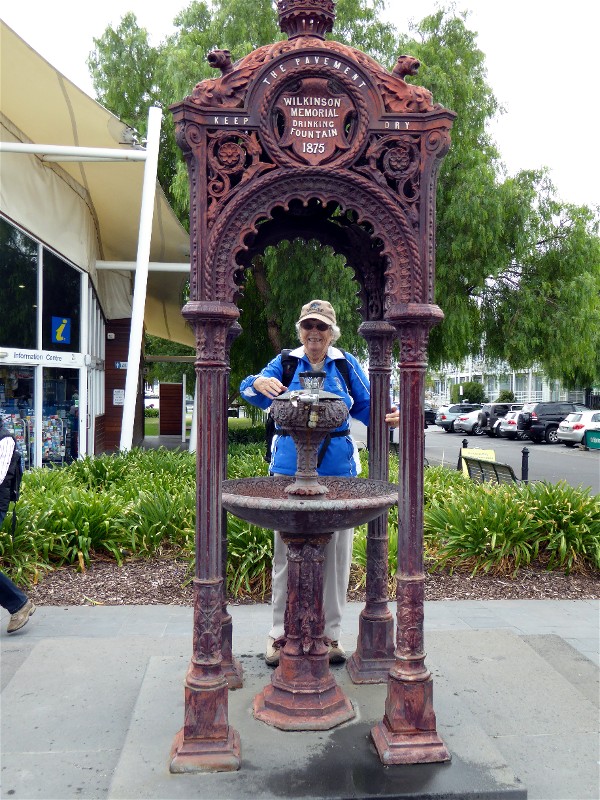 |
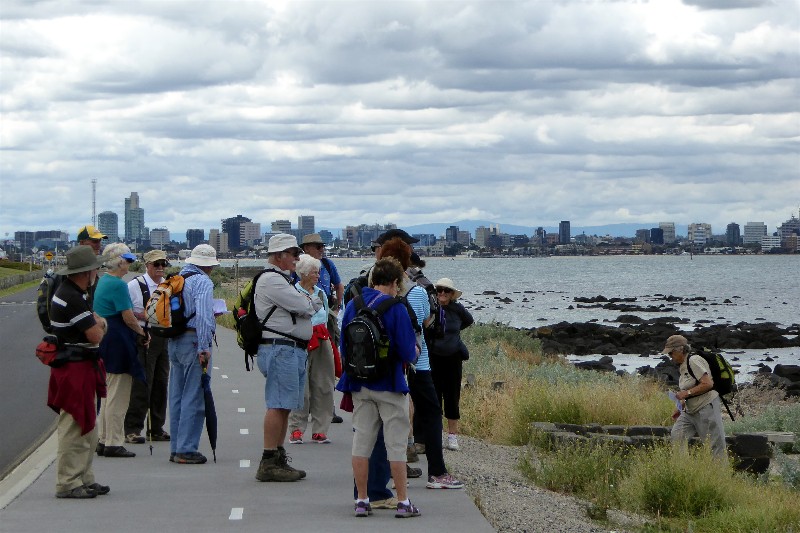 |
The group ready to start
Click on thumbnail to enlarge photo |
Ainslie
Click on thumbnail to enlarge photo |
Strolling along the seaside
Click on thumbnail to enlarge photo |
Day 2
Como House and Herring Island - led by Joan
On weekends from January to April, visitors can glide across the Yarra River on
a free punt to explore a sculpture park on the river's only island. This walk links
the tiny island to another secluded beauty, Como House, a colonial masterpiece set
in extensive gardens.
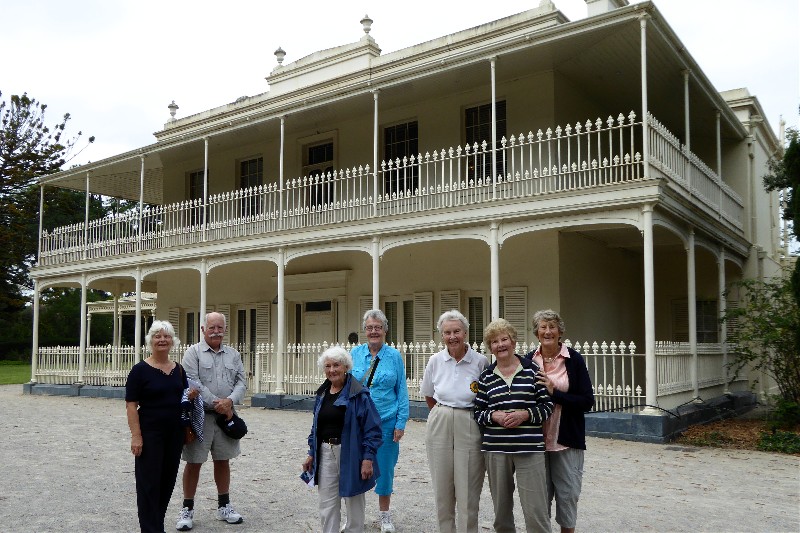 |
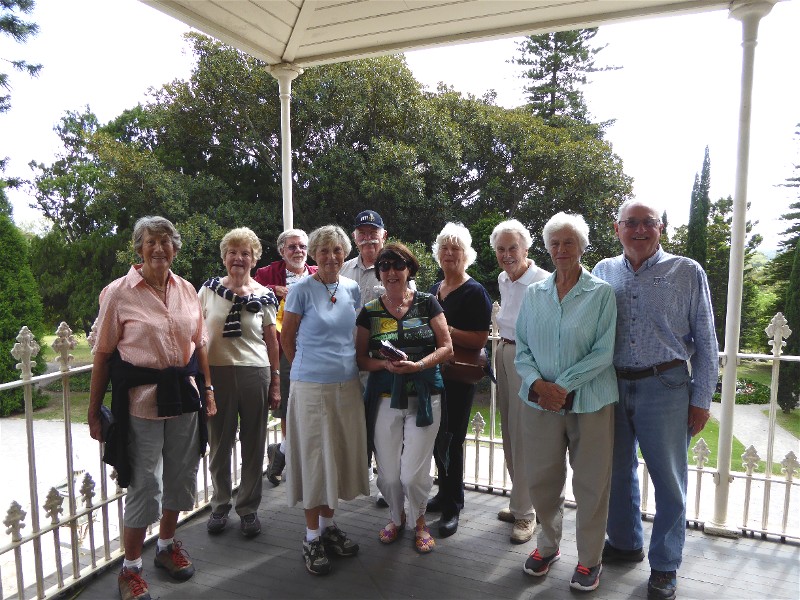 |
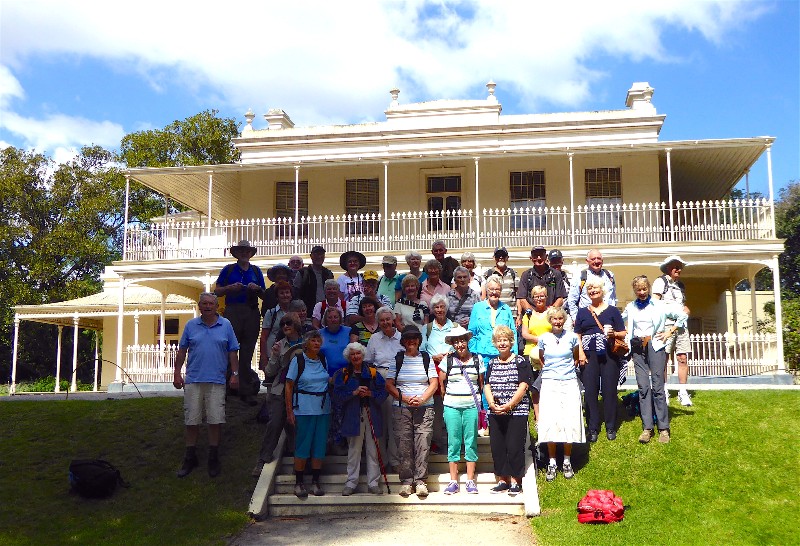 |
Julie, Charles, Joone, Gillian, Jan,
Trish and Barbara
Click on thumbnail to enlarge photo |
The verandahs of Como House
Click on thumbnail to enlarge photo |
BBBW descends on Como House
Click on thumbnail to enlarge photo |
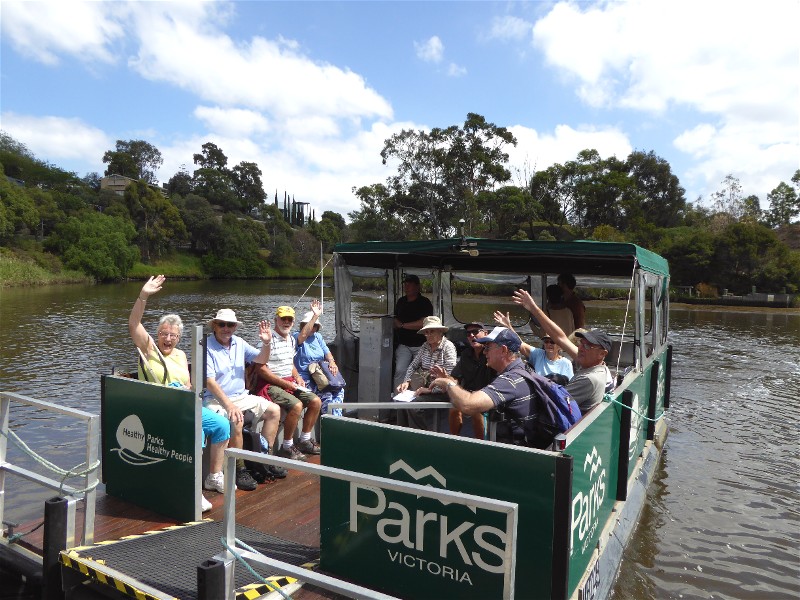 |
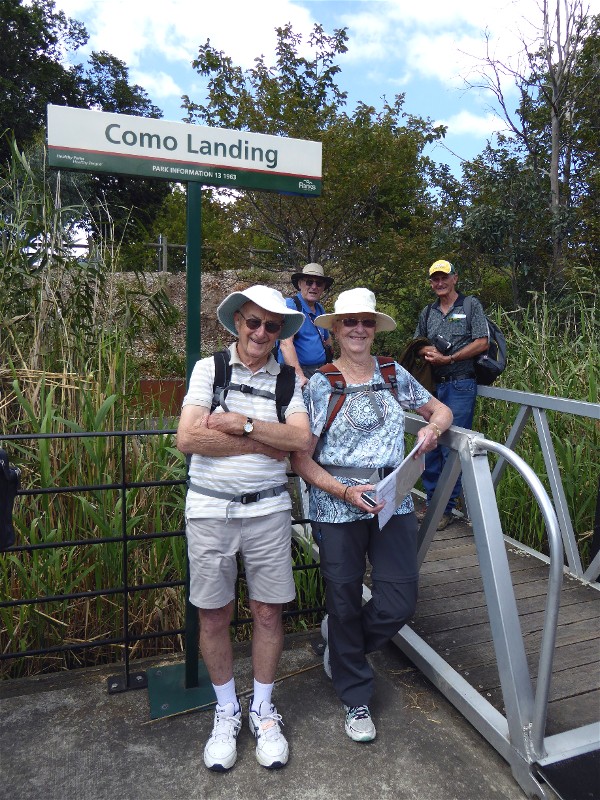 |
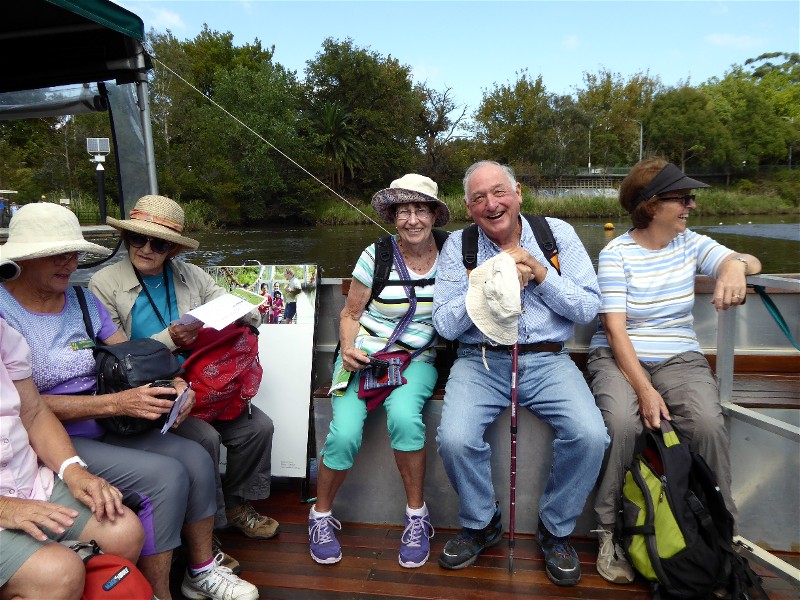 |
Punt crossing to Herring Island
Click on thumbnail to enlarge photo |
Grant and Meriel
Click on thumbnail to enlarge photo |
Lesley and Ian
Click on thumbnail to enlarge photo |
Day 3
Arts Precinct - led by Joone and Trish
This 4.5 inner city circuit walk takes in the Arts Centre, National Gallery of
Victoria, the Victorian College of the Arts, Federation Square galleries, and nearby
alleys and laneways.
Sherbrooke Forest and Cloudehill Gardens - led by Ainslie & Mike, and Robert M
The Dandenong Ranges National Park is northeast of Melbourne, and our group of
eleven drove to Grants Picnic Ground near Kallista, one of many quaint villages
in the densely forested Dandenongs.
We split into two groups, with five of us on a 7km medium grade walk led by
Mike and Ainslie, and the others led by Robert on two easier walks. Both groups
enjoyed stunningly beautiful tall tree ferns, incredibly tall straight Mountain Ash,
lyrebirds and wallabies.
After delicious lunches in Grants Tearoom, we drove on the complicated route
through delightful rainforest to Cloudehill Gardens. Developed since 1992 from a
1920's flower farm, compartments are all different - Italian Renaissance, English
flower beds and meadows and a vegetable garden, all on rich volcanic soil occasionally
under snow. The magnificent weeping maples came from Japan in 1928. We were
delighted with Cloudehill.
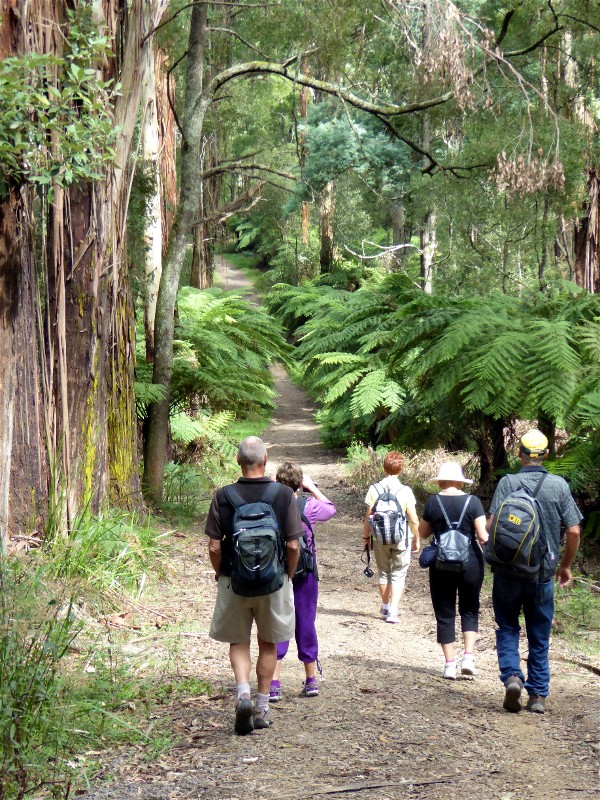 |
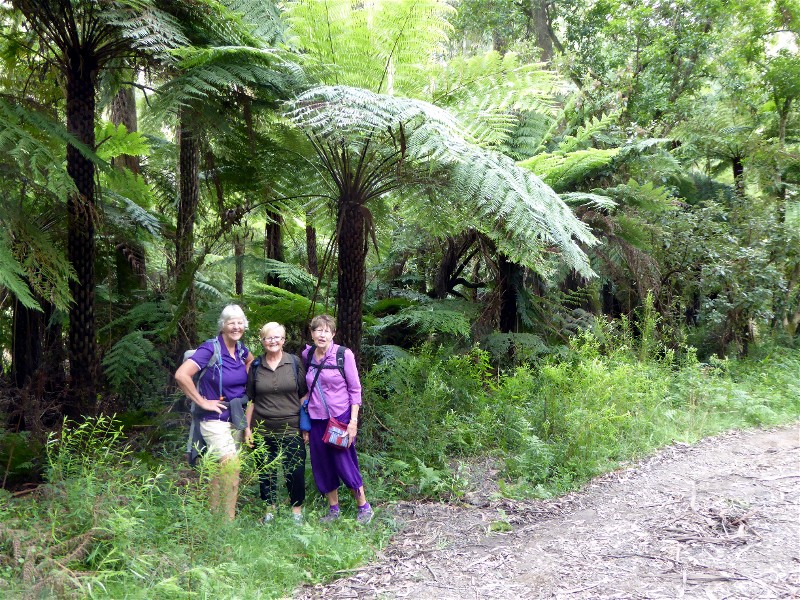 |
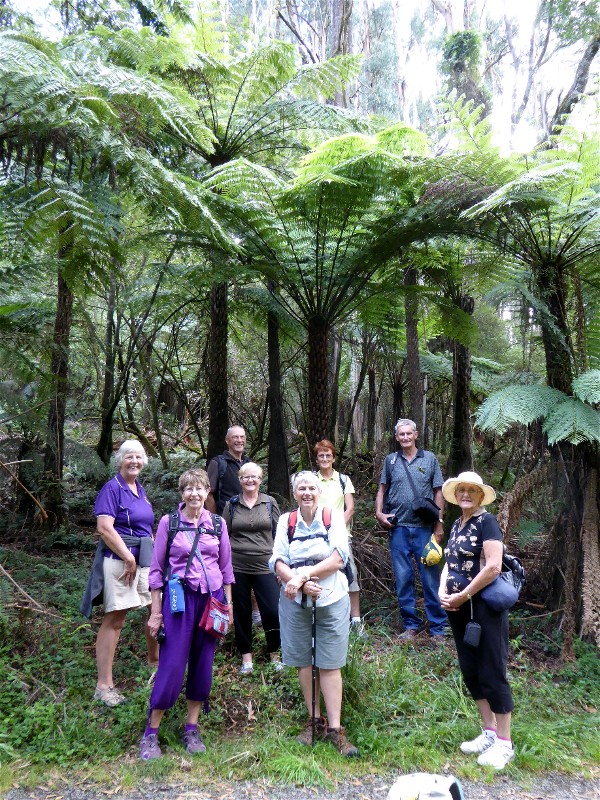 |
Mountain Ash and Tree Ferns beckon
Click on thumbnail to enlarge photo |
Donna, Kay and Lesley
Click on thumbnail to enlarge photo |
Enjoying magnificent stands of Tree Ferns
Click on thumbnail to enlarge photo |
Day 4
Australian Gardens and Reserve, Cranbourne - led by Karen C
This unique botanic garden, together with the surrounding nature reserve is the Australian
native flora extension of the Royal Botanic Gardens in Melbourne city. They could not, however,
be more different. Stage 1 opened in 2006 and Stage 2 in 2011. The 15 hectare
Gardens are a creative showcase of Australia's varied and spectacular flora, as well
as an introduction to the creativity of some of our best landscape artists. Less
well explored are the wonderful rolling lands surrounding the formal gardens, with
wild grasslands, coastal scrublands, exotic hanging swamps, and spectacular
wildflowers in Spring.
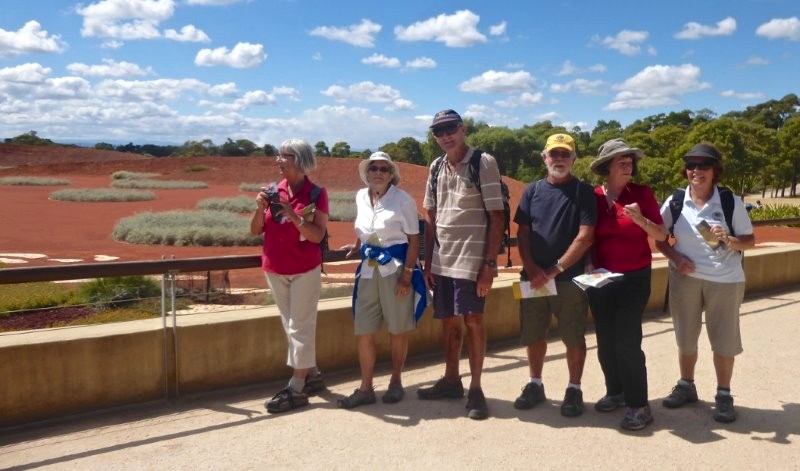 |
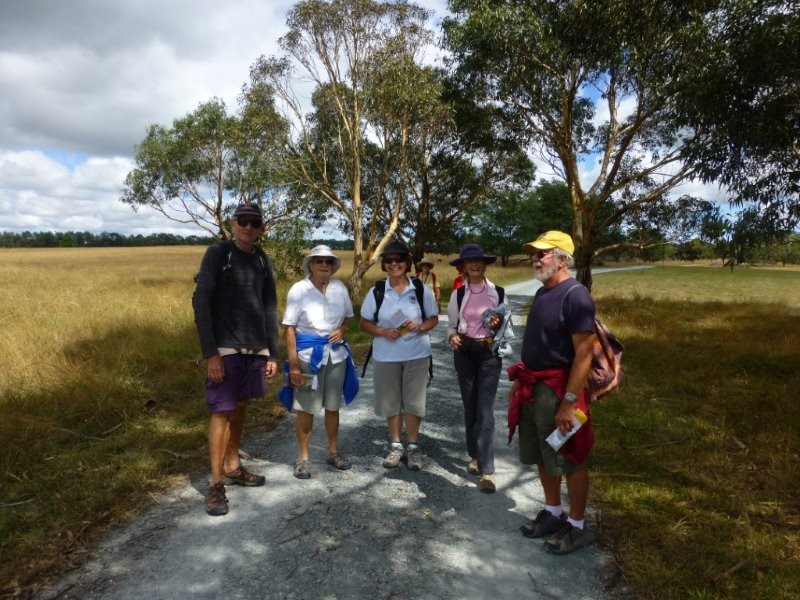 |
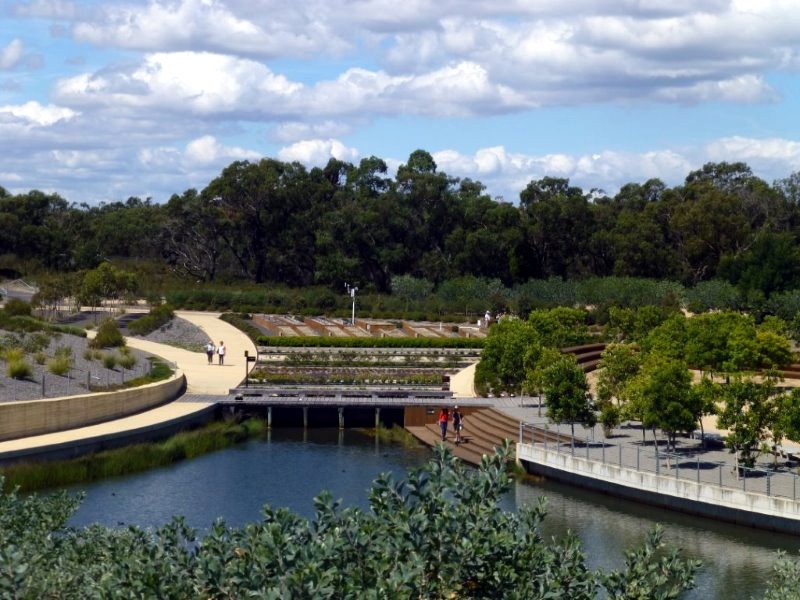 |
Cranbourne's iconic desert garden
Click on thumbnail to enlarge photo |
Grasslands on Wylie Creek track
Click on thumbnail to enlarge photo |
Creative Cranbourne landscaping
Click on thumbnail to enlarge photo |
Day 5
Docklands - led by Jill and John
The old industrial wharves area of Melbourne (Docklands) is an ever-evolving redevelopment work
in progress since the 1990s, providing an extension to the traditional business
district. Now a swanky area of apartments, restaurants, waterfront promenades, public sculpture
and marinas, there are still glimpses of the old maritime wharves and warehouses to
be found on this 6km circuit walk.
Warrandyte Gold Fields - led by Joan and Kay
The area around Warrandyte, just 24 km from the centre of Melbourne, was at the
heart of the gold rush, with the first officially recorded discovery of gold in
Victoria at Anderson's Creek in 1851. This 3.5 km hilly walk within Warrandyte
State Park takes in old mines and tunnels, one of which is accessible with care
and a good torch.
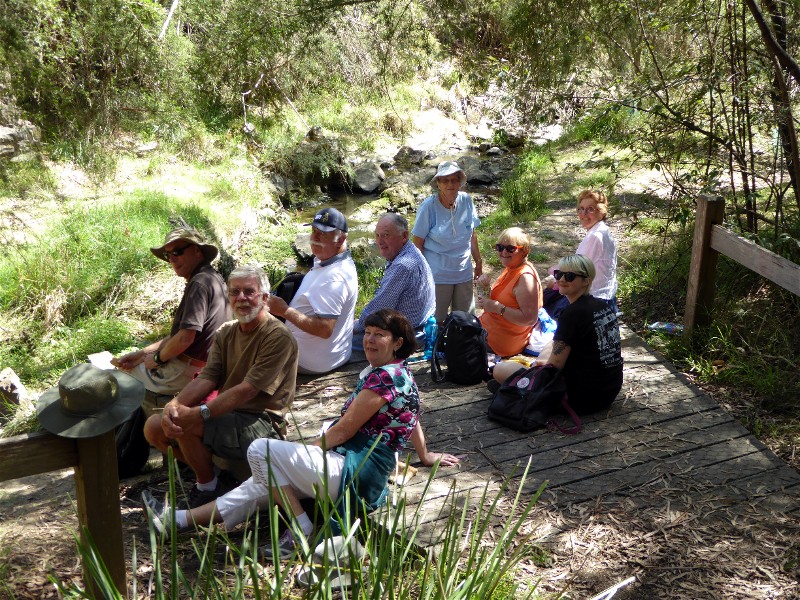 |
The group finds a shady spot
Click on thumbnail to enlarge photo |
Day 6
St Kilda to Station Pier and Webb Dock - led by Donna and Lesley
Starting amongst the hubbub of St Kilda this easy walk follows the bayside towards
Port Melbourne and historic Station Pier where the Tasmanian Ferries dock. The
walk continues along the bay past the modern waterfront development of Beacon
Cove and Sandridge Beach to reach the end of one of the breakwaters of Webb
Dock East, one of Melbourne's busiest docks, perched on the mouth of the Yarra
River.
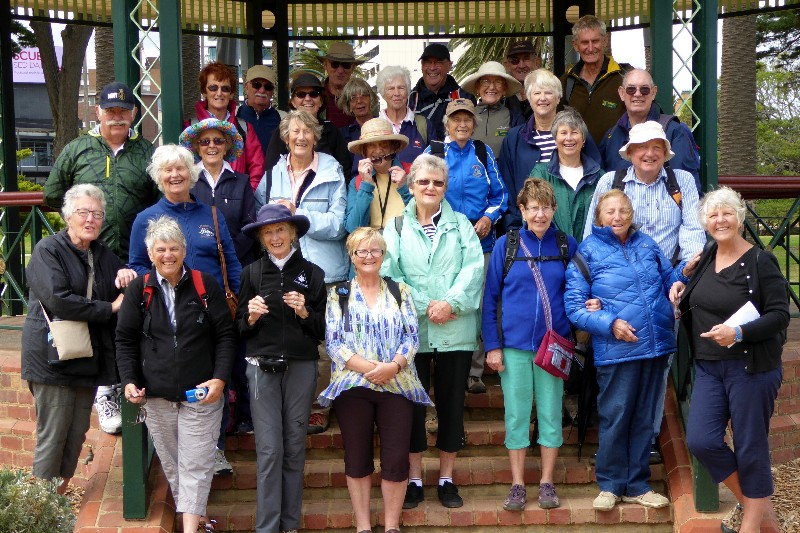 |
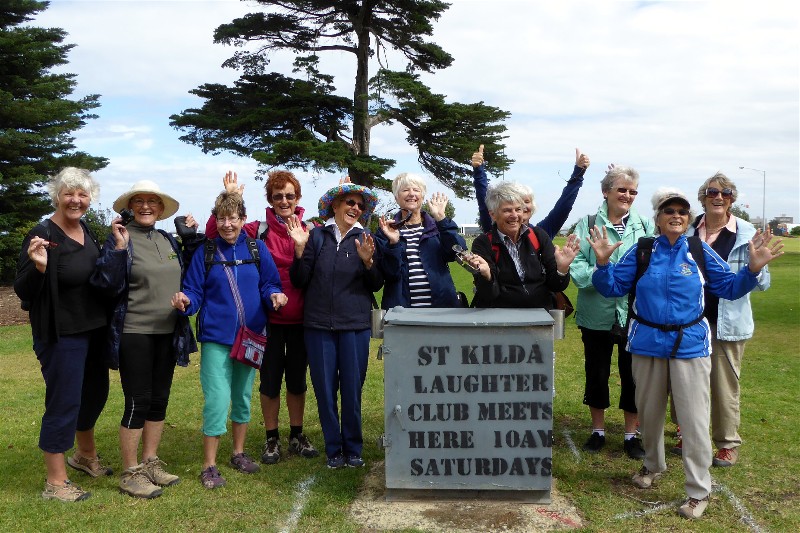 |
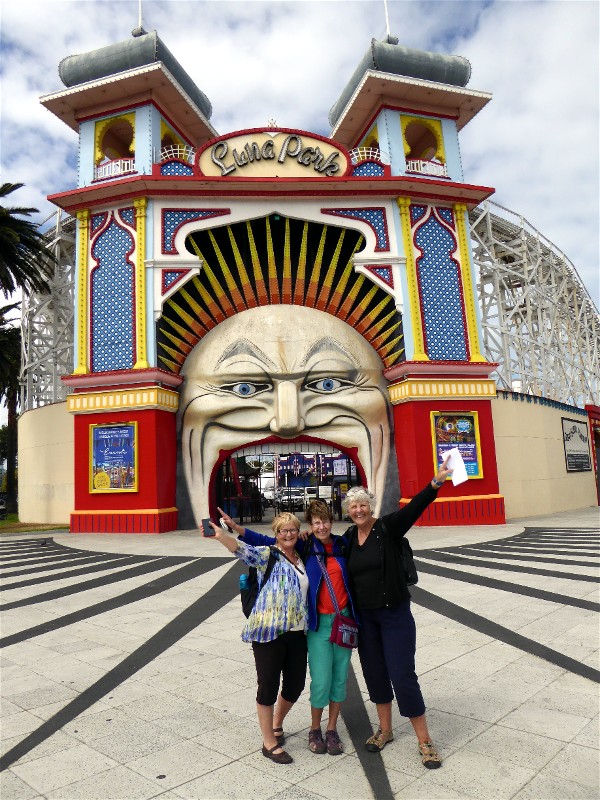 |
One of Donna's famous group photos
Click on thumbnail to enlarge photo |
The Laughter Club
Click on thumbnail to enlarge photo |
St Kilda icon
Click on thumbnail to enlarge photo |
Out and about
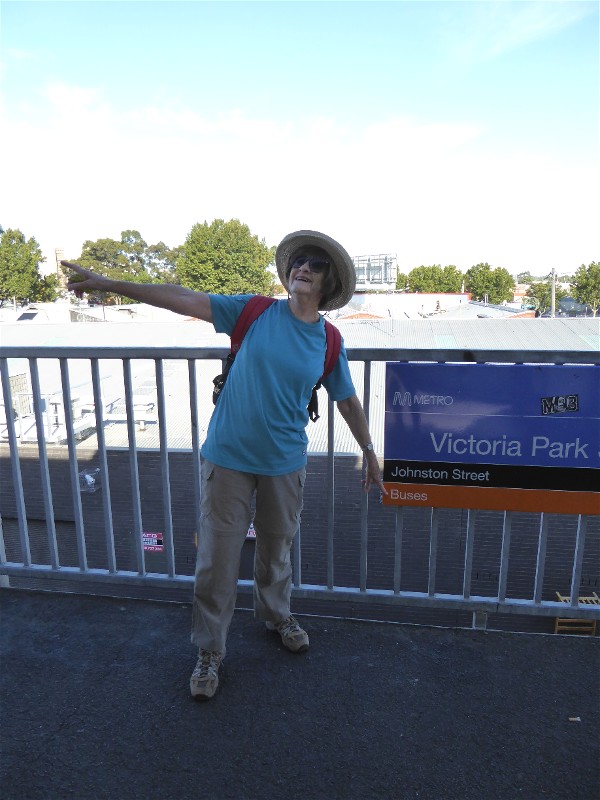 |
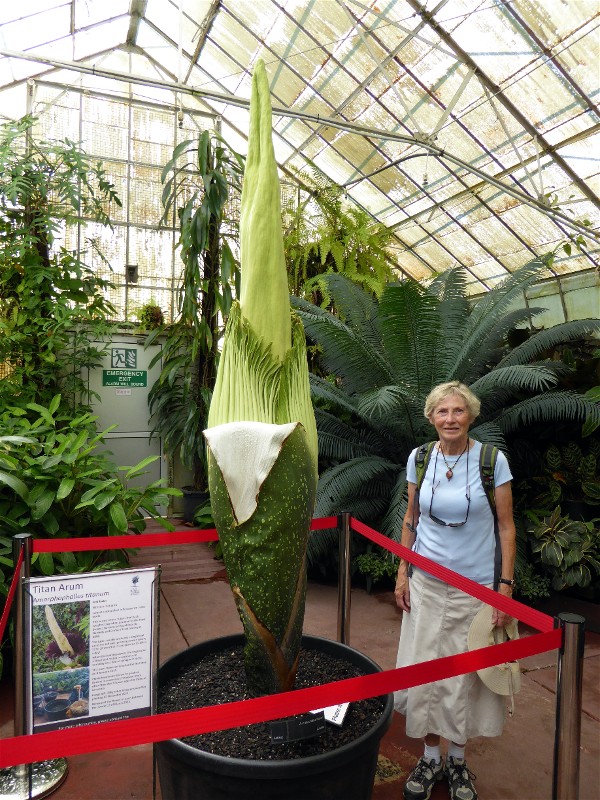 |
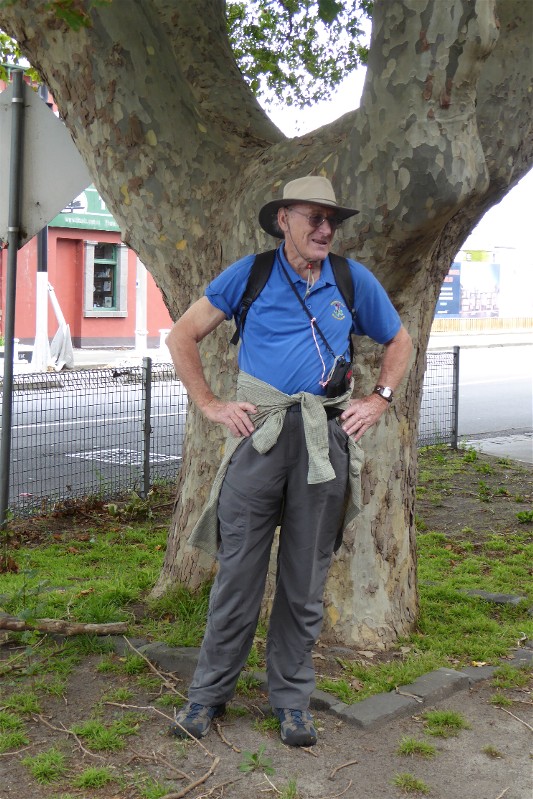 |
Camp Leader Joan directs the
horde
Click on thumbnail to enlarge photo |
Susan waits for the Titan Arum
to bloom
Click on thumbnail to enlarge photo |
Camp Leader Bob keeps a
low profile
Click on thumbnail to enlarge photo |
A very big thank you to Joan and Bob for researching, organising and leading the
horde of 40 bushwalkers on this long awaited, and highly anticipated city camp.
END
back to Top


























